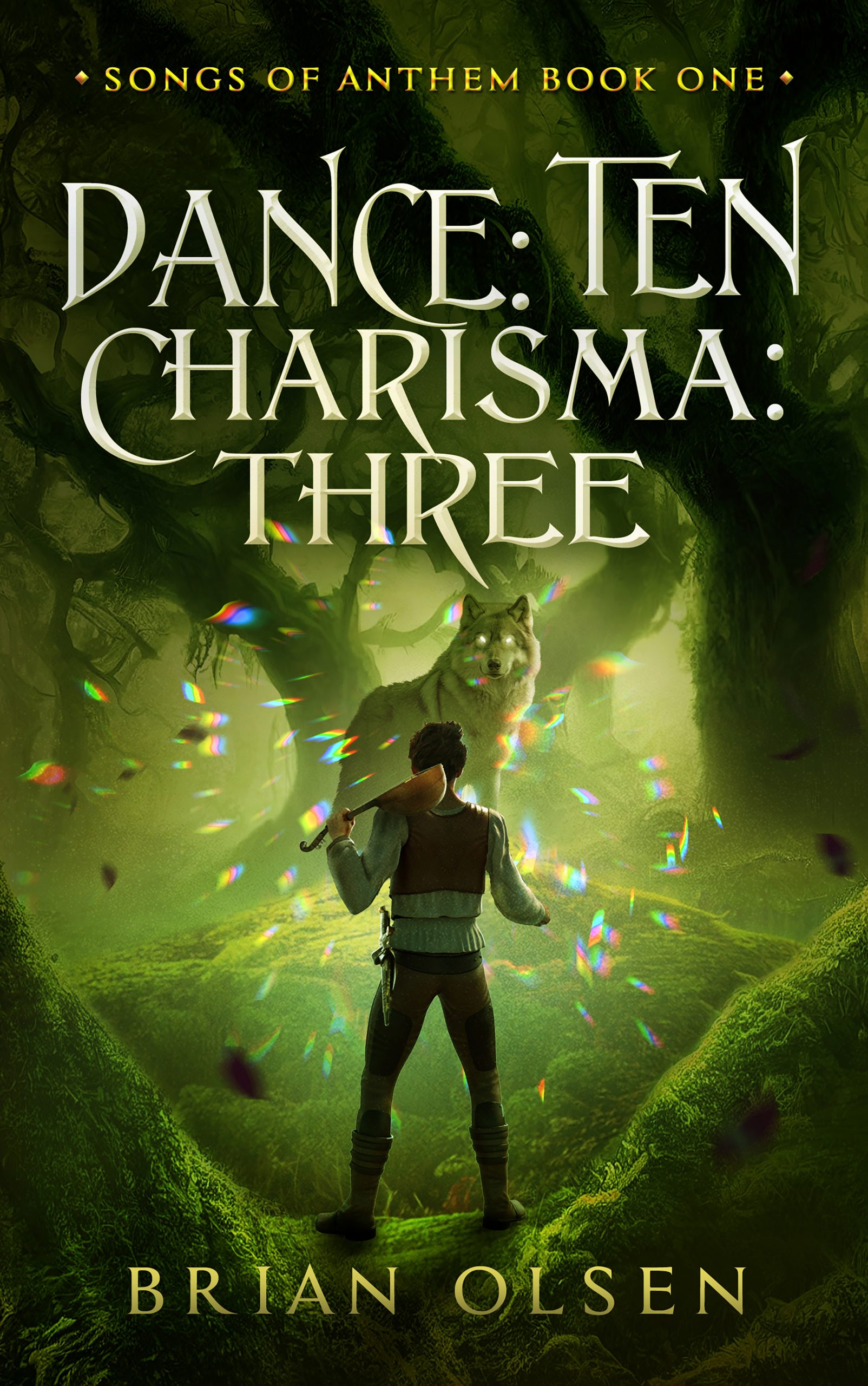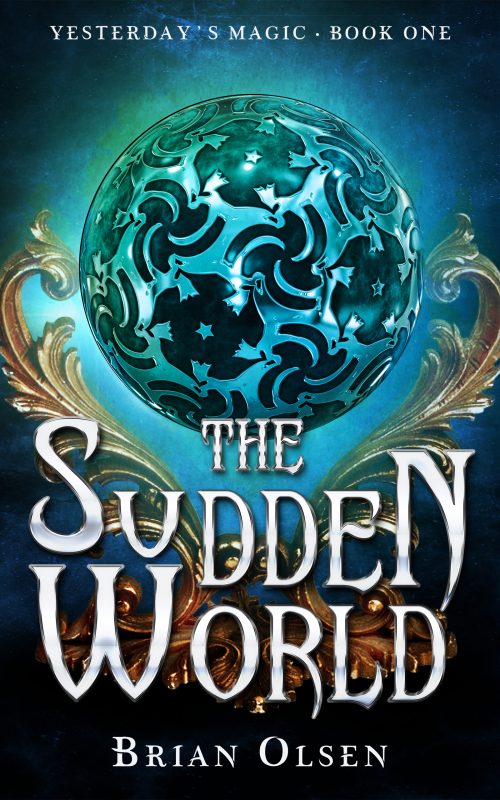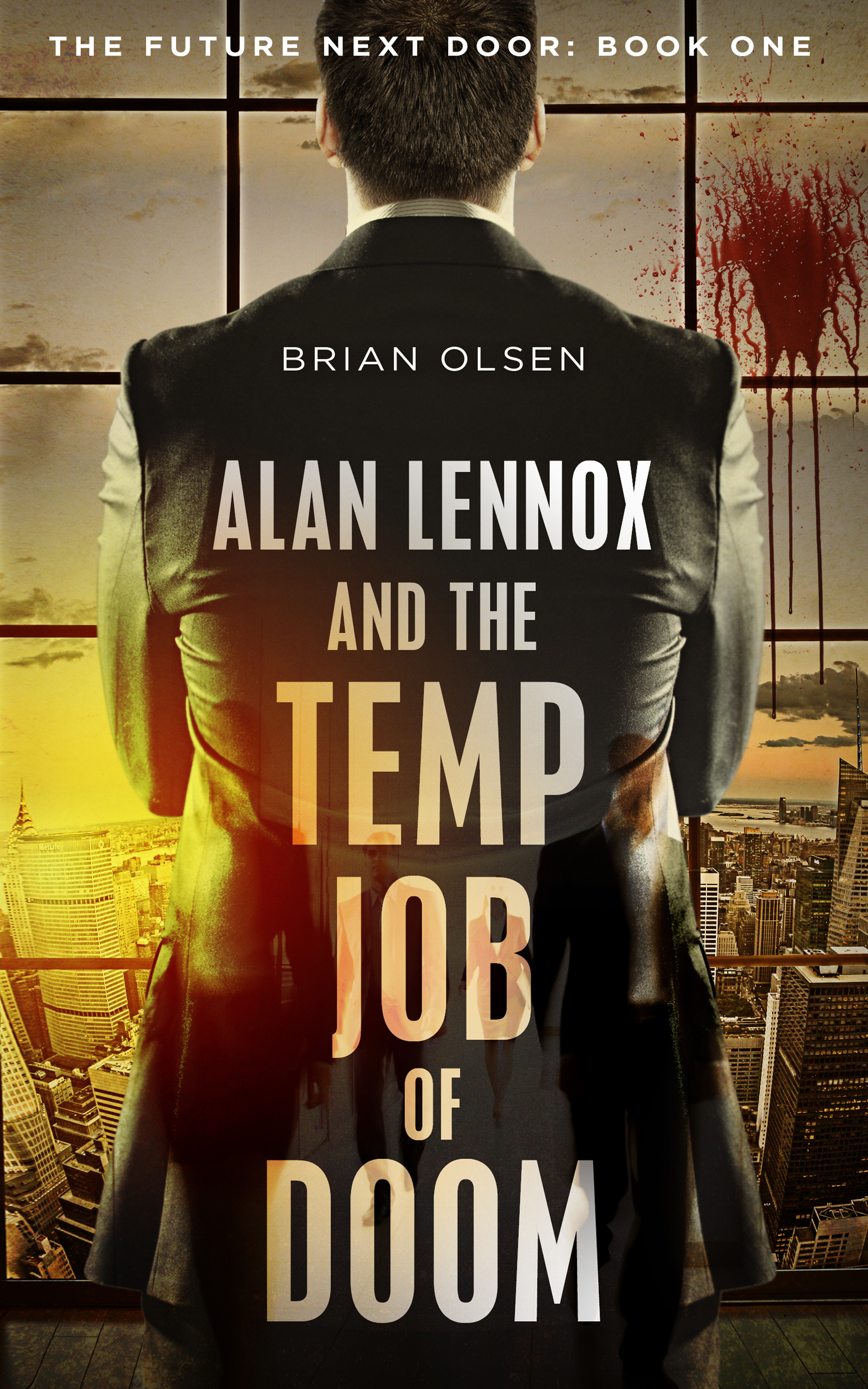This article was originally published by Geeks Out in September of 2016, just before Extraño was brought back from limbo by Steve Orlando. Since it’s no longer available on the Geeks Out site, I’m reposting it here as it first appeared (slightly edited to combine two parts into one). I know he’s back! Don’t leave a comment letting me know he’s back!
When asked who the first gay superhero from a mainstream publisher was, most people would say Northstar, who came out in the pages of Marvel’s X-Men spin-off Alpha Flight in 1992. But another hero beat the Canadian speedster to the punch by almost five years. Extraño is almost forgotten by all but die-hard old-school comics fans, so let’s dig deep and take an excruciatingly close look at this milestone of LGBT comics history.
Millennium was DC Comics’ line-wide crossover event for 1987, following the trend begun two years earlier by their massively successful Crisis on Infinite Earths. In it, two immortal aliens choose a small number of Earthlings to shepherd humanity to the next stage of its evolution, and the world’s superheroes gather to protect the Chosen from an evil cult of alien androids out to do them in. The Chosen were an international assemblage, and like many other well-intentioned 80s multi-culti teams, each embodied some particular national stereotype – there’s a wealthy Japanese businessman, an Australian aborigine who muses about the Dreamtime, an old white South African who’s basically the villain from Lethal Weapon 2. That sort of thing. And then there’s Gregorio de la Vega.
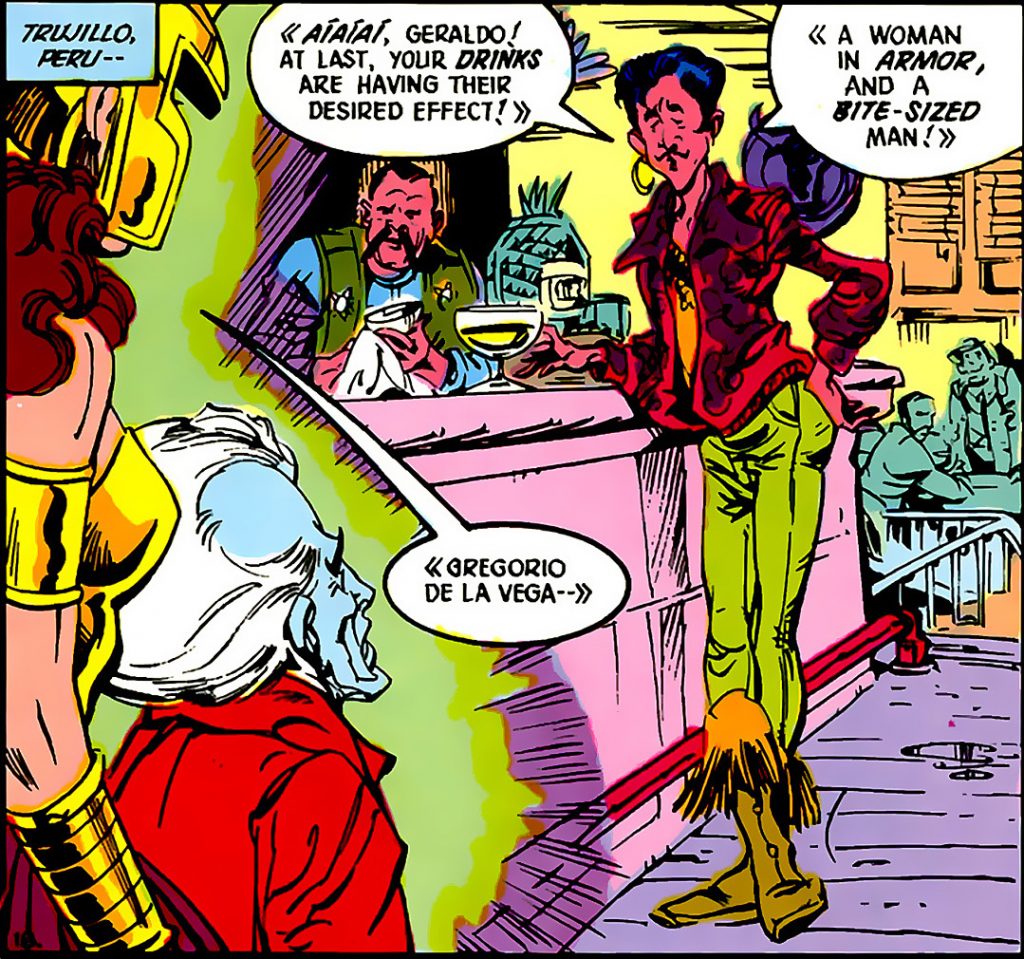
Oh, my lord, how can you not love him immediately? Gregorio is from Peru, but the population he’s meant to represent sure ain’t Peruvians. This is his very first appearance, in the second issue of the series, and he’s in a gay bar, drinking an enormous cocktail, wearing that magnificent ensemble, and cracking jokes about two aliens who just materialized in a blaze of green light. He should be made an honorary Green Lantern just for calling one of the Guardians of the Universe “bite-sized.”
Gregorio is a very unusual character for a mainstream comic book – in 1987, depictions of homosexuality were actually forbidden by the Comics Code Authority, the industry regulatory body. Not having the CCA’s seal would have made it harder for Millennium to get distribution on newsstands, so while Gregorio’s sexuality is obvious, the words “gay” or “homosexual” never actually appear in the comic. Writer Steve Englehart does use both words in a text piece at the end of issue 6, talking about how important he felt it was to have a gay character be a member of the Chosen. I guess the CCA didn’t read the letter columns?
When told that he’s been picked to help advance the human race, Gregorio replies…
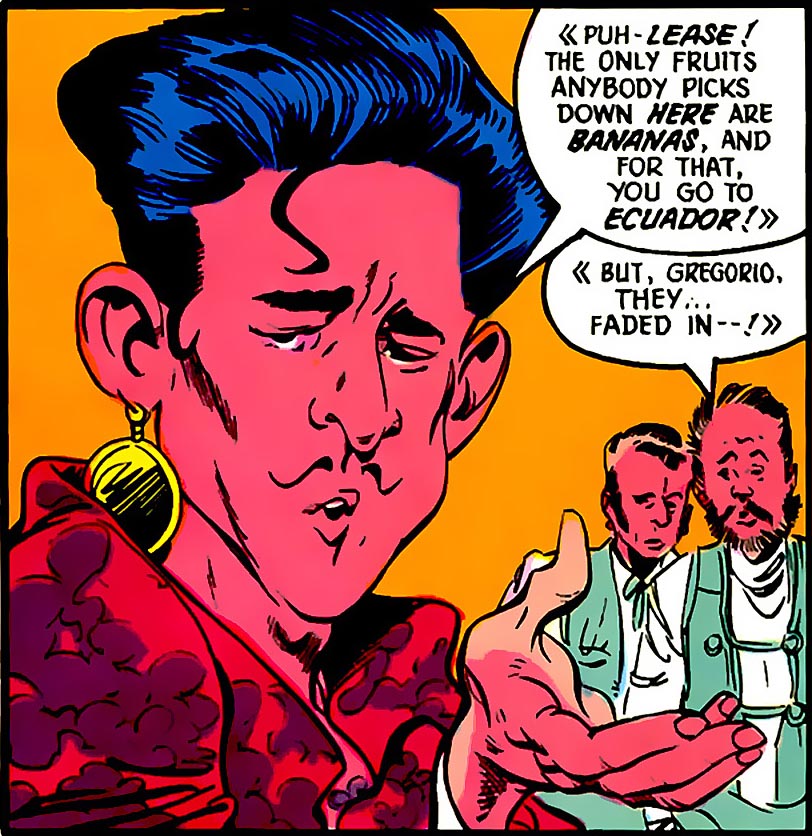
If any readers were really so thick that they hadn’t clued in yet, Gregorio referring to himself as a fruit probably opened their eyes. He insists that the aliens are drunken hallucinations and dismisses them. And I need to visit some Peruvian gay bars if that’s the quality of hallucination the drinks bring on.
Extraño inspired mixed reactions in LGBT comics fans. On the one hand, any representation was better than nothing and, outside of indie comics, Extraño was it. While some people were happy to have even this slight sign of progress, others weren’t so thrilled with the first gay superhero embodying so many popular stereotypes of a homosexual man. I didn’t much agree with that point of view then, and I agree even less now. However, while I adore Gregorio’s glorious flamboyance, there are one or two clichés I could have done without.
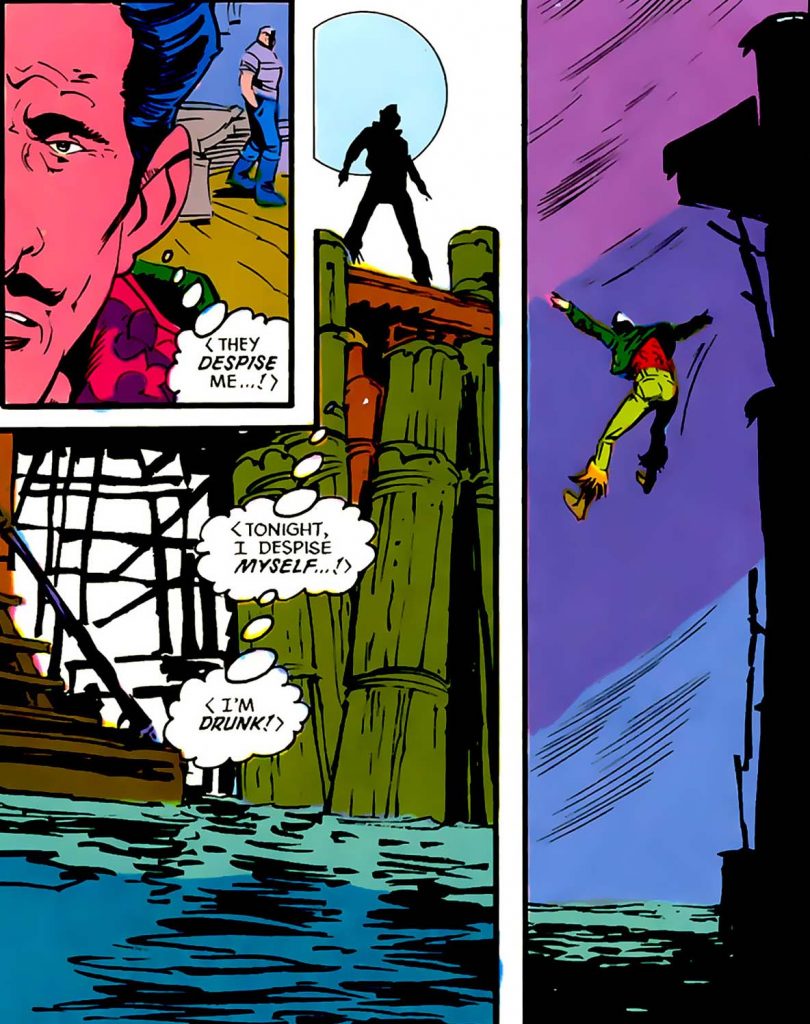
Yup, Gregorio is a Self-Loathing Gay (TM). This doesn’t quite jibe with the lively spirit we’ll get to know across the rest of the series. But he’s gay, so he must want to die, right?
Although suicide is clearly the writer’s intention, I’m choosing a redemptive reading based on the art. I mean, look at the height. It’s not exactly the Brooklyn Bridge. He’s not even going to be hurt by that fall, let alone drown. I think he’s mad at himself for getting too drunk and thinks a cold dousing will fix him up. That’s my story and you can’t convince me otherwise.
Whatever his reasoning, this is what prompted the icy plunge…
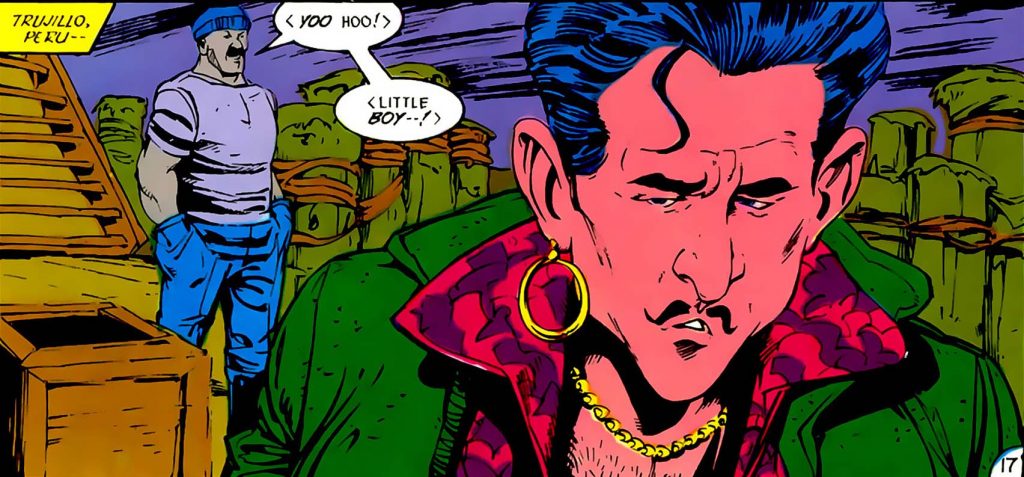
Little boy? That the best you got, stevedore? Come on, Gregorio, that’s weak. He’s obviously a closet case cruising for some late night cargo-loading. Tell him to whip out his longshoreman and in two minutes you’ll have him crying in your arms about how he could have been a contender.
The Flash zooms by and saves Gregorio from a night of rough trade followed by a damp walk home…sorry, I mean death, he saves him from death. Flash gives him a rather weak pep talk about not letting other people’s opinions matter, which I guess works? Gregorio barely talks in this scene, just his straight savior, but it must cheer him up because the next time we see our hero, he’s signed on the dotted line and is all ready for that sweet, sweet, alien enlightenment. He and the other Chosen sit through a lecture about some pseudo-scientific New Age codswallop and then I think take LSD?

I mean, they say it’s a transcendental state, but they sure do seem to be tripping balls. Gregorio hallucinates himself unraveling into rainbow-colored tentacles. There’s some symbolism for ya. Don’t need to go ask Alice about that one.
The preparation also involves physical training, including a little tai chi, which Gregorio really takes to.
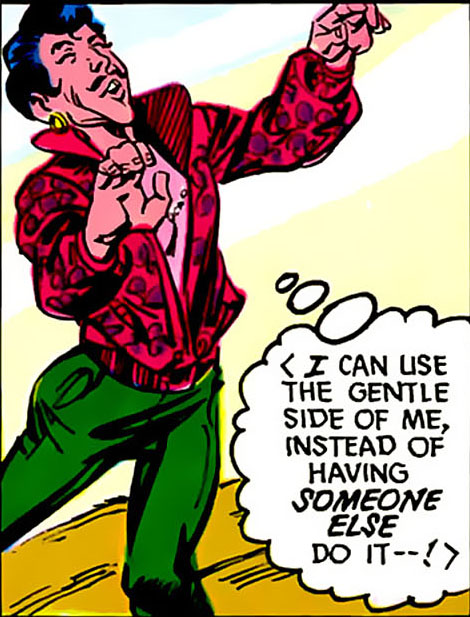
Oh, dear, there’s a lot to unpack in that sentence, and the baggage is heavy indeed. Englehart’s intentions were good but the self-loathing written into Gregorio is really making me struggle with my redemptive reading. The idea that gay men are “used” is such a straight point of view, and having Gregorio vocalize (think-alize?) it is ugly. There are so many things wrong with this, not the least of which is the idea that a feminine gay man is necessarily passive, that sex is something that is “done” to him. He’s saying that once he knows how to get in touch with his own softer nature, he won’t need that icky gay sex anymore to make him feel feminine. Which, you know, screw that. I can’t redeem this panel, even as a joke, so let’s just move on.
Millennium was too big a story for just eight issues, so it spilled out into many of DC’s other titles. In Green Lantern Corps 221, the Chosen are given a day pass to go experience the humanity they’re about to give up. Gregorio says he want to learn more about the Green Lantern Corps, so Lanterns Kilowog and Arisia decide to take him to the moon, where their arch-enemy Sinestro is held prisoner. And that makes perfect sense to everyone, I guess.
“I’d like to learn more about your history.”
“How about we go to the moon and meet a super-powered mass murderer instead?”
“Okay!”
I’m glad they went, because it resulted in hands-down the greatest single line of dialogue in all of comicdom.
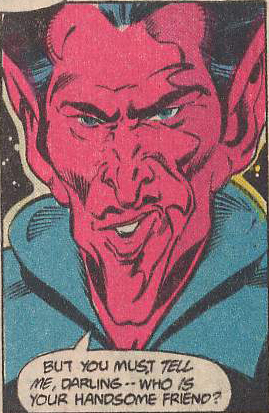
Sinestro hits on Extraño. He camps it up and flirts like Paul Lynde at a piano bar. That’s canon, and it’s beautiful.
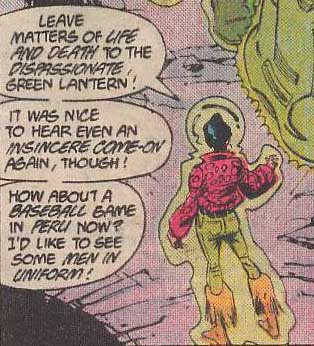
I’m taking Gregorio’s comment about how nice it is to hear even an insincere come-on to be a backhanded barb at the relentless heterosexual hegemony at the Green Lantern Citadel. Seriously, the two aliens who are running the show go on and on about male and female being perfect and complementary opposites to each other. I imagine Gregorio rolling his eyes through most of it. Guardians of the Universe, you’re billions of years old, you can spare a second to check your privilege.
They go watch some Peruvian baseball. It gets interrupted by a rain of fire, blah blah blah, standard superhero stuff that doesn’t have much to do with our topic. But before all that Gregorio slips a joke right past the censors…
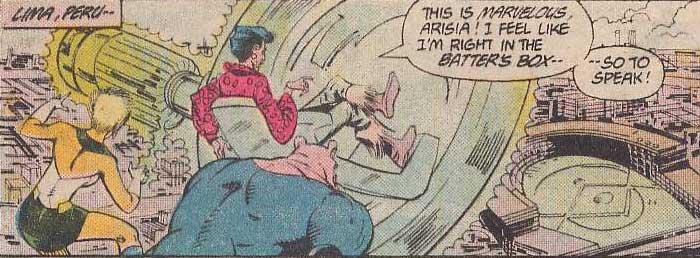
So to speak. I’m guessing nobody got how truly dirty this joke is. Also, Gregorio’s a top. That’s canon as well.
Holiday over, the time comes for the epic transformation. After eight issues of build-up, the next step in humanity’s evolution is revealed to be…a team of B-list superheroes. All righty. Gregorio takes a dose of alien energy to the noggin and becomes Extraño!
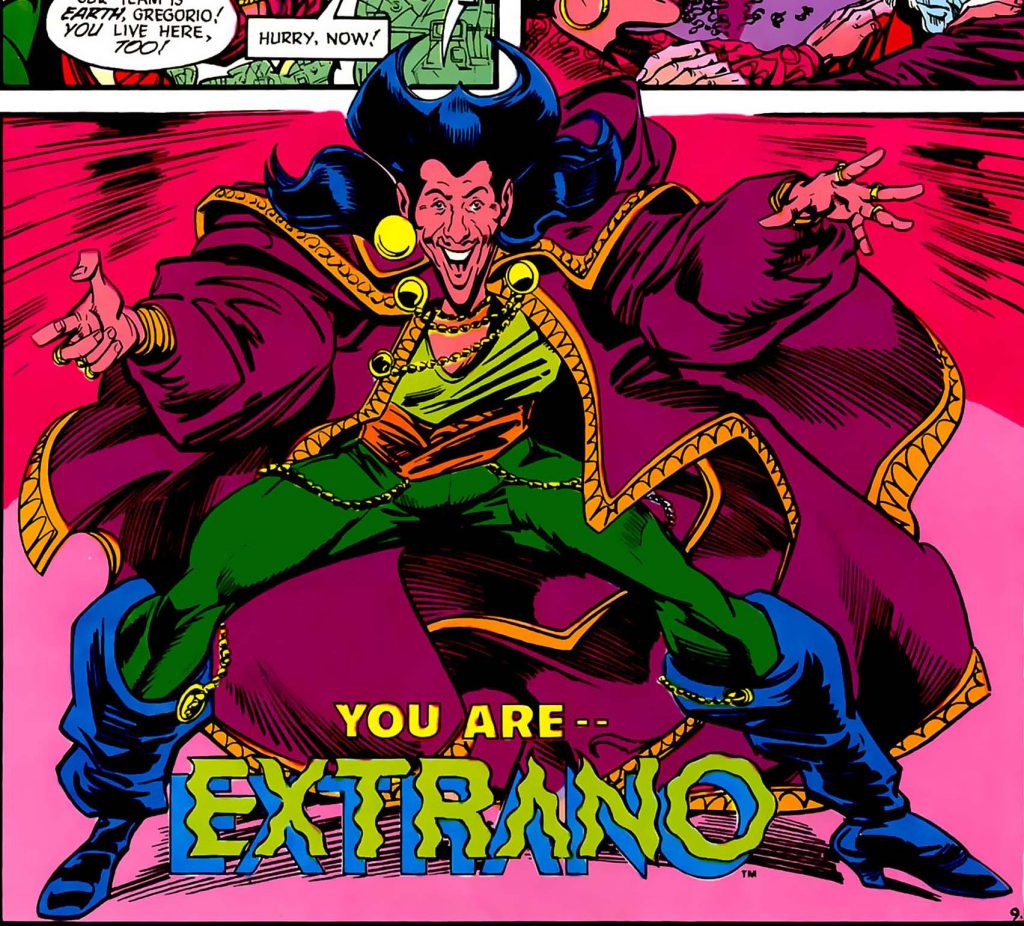
That is a whole lot of look. All the other Chosen get fairly radical physical transformations, but Gregorio gets some volumizer and an outfit that was probably already hanging in his wardrobe. “Extraño” sounds evocative but it’s just the Spanish word for “strange.” They literally named their gay superhero a synonym for “queer.” But the Japanese guy got turned into a living computer named “Ram,” so I guess it could have been worse.
Extraño’s powers are left a little vague – he shoots off a colored light show and declares himself a witch, and that’s about it. But it’s enough to gain him an admirer. In another dimension, the mysterious hero known only as the Phantom Stranger is watching…
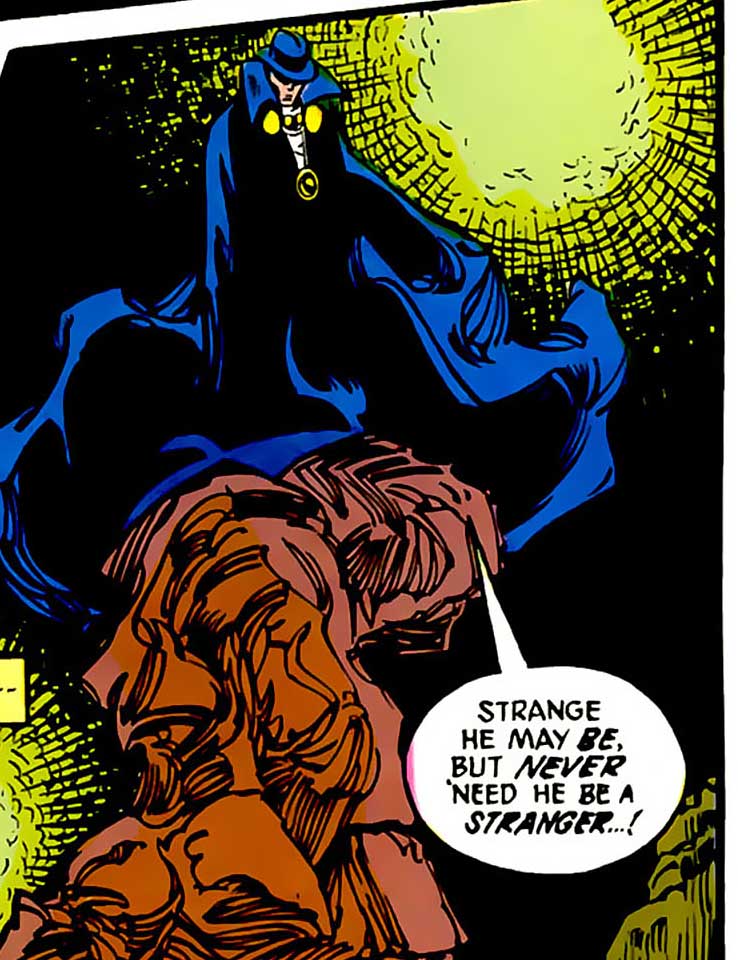
Oh, really? Like to get to know him better, would you? What are your hands up to under that billowing cloak? This is just a cameo by the Stranger, and as far as I know he never got up the nerve to introduce himself. Oh, what might have been. Post your best Phantom Stranger/Extraño slash-fic in the comments!
Betty, the Australian Dreamtime-enthusiast, loses her physical form and becomes one with the Earth, because of course she does. But she’s not lost to them – she and Extraño are linked.
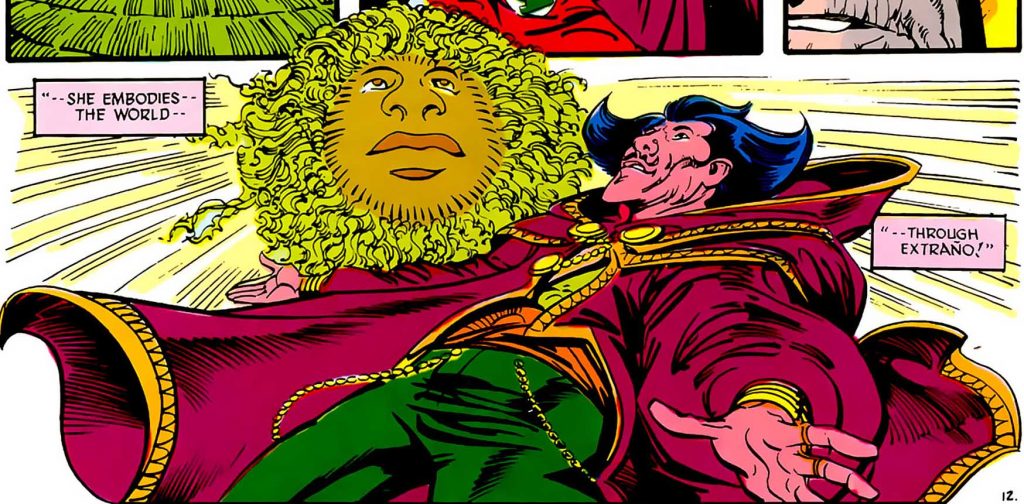
Because what’s a gay guy without a needy girl BFF? Gotta cram that last stereotype in before the series wraps up.
And wrap up it did, with more of a whimper than a bang. Extraño was controversial, and with good reason. His problems weren’t his effeminacy or his flamboyance, but rather his heavy-handed movie-of-the-week brand of self-loathing. Take that away, and you’ve got a superhero who’s witty, confident, and loving, all great traits for a representative of the LGBT community. And I adore him for it.
But we’re not done yet! Extraño and the Chosen spun-off into their own ongoing series, The New Guardians. And if you thought Millennium was jam-packed with topical issues from the 80s, well, just you wait.
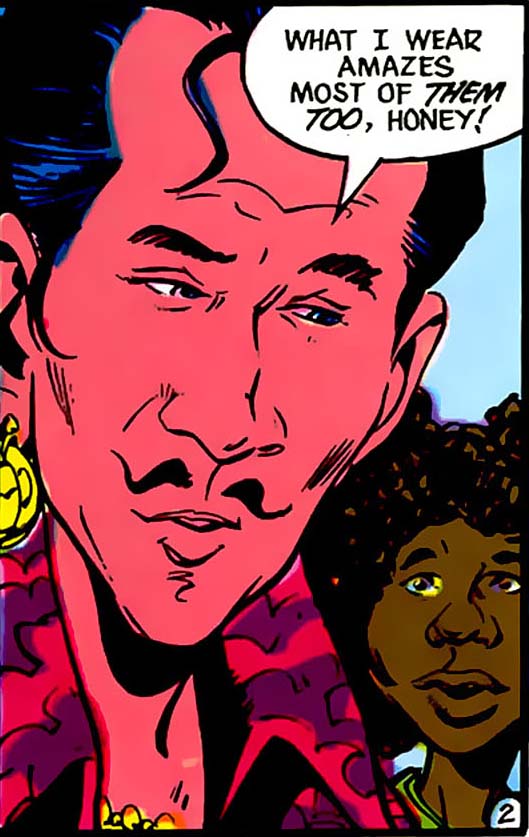
The first issue finds our heroes somewhat at loose ends. After an entire miniseries of being told they’re meant to usher in the next stage of humanity’s evolution, they realize their ancient alien mentors shuffled off this immortal coil without leaving them any instructions as to how one might actually go about doing that. Extraño thinks he’s figured it out.
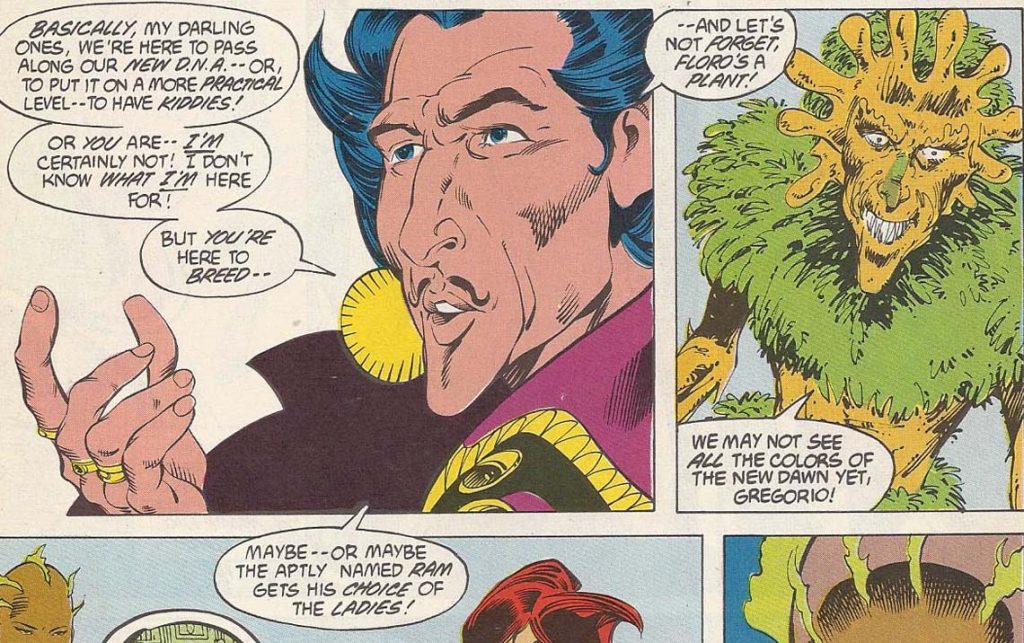
He dishes the straight T, and ends it with a dick joke. This is the Extraño I love. Although he’s being a bit short-sighted – I mean, even in 1988, there was such a thing as artificial insemination. He could always go that route. (Extraño, I mean. Not the plant.) And wouldn’t he make the best dad?
His teammate Harbinger, who spent her entire life on a satellite isolated from humanity (long story), is a little anxious about the whole sex thing. Extraño offers her some wise words.
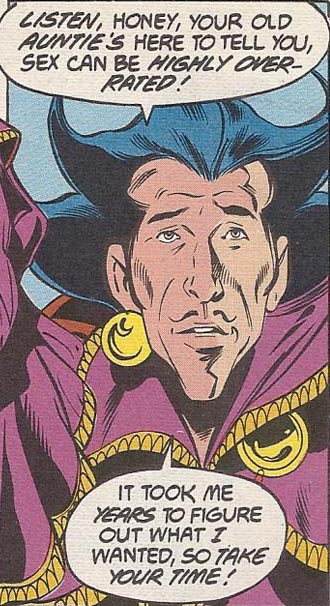
He’s cast in the role of the wise old nonthreatening queer offering advice to his straight girlfriend, which I don’t love. But it’s still a gay man talking about sex in a DC Comic in the eighties, so I’ll take it. Also, he calls himself Auntie, which is hilarious. I wish that had been his superhero code name instead of Extraño. As for sex being highly overrated, on that we’re going to have to agree to disagree.
The nature of Extraño’s superpowers remains somewhat nebulous. He gets vague warnings of danger, which they could never have called his sissy-sense tingling, but you and I can. And he can see auras, sort of. He doesn’t do much, honestly. In this issue he waves his hand and unlocks a door and it’s the most practical thing he’s done so far.
Unfortunately, on the other side of that door is an artificial vampire called the Hemogoblin. Whoops!
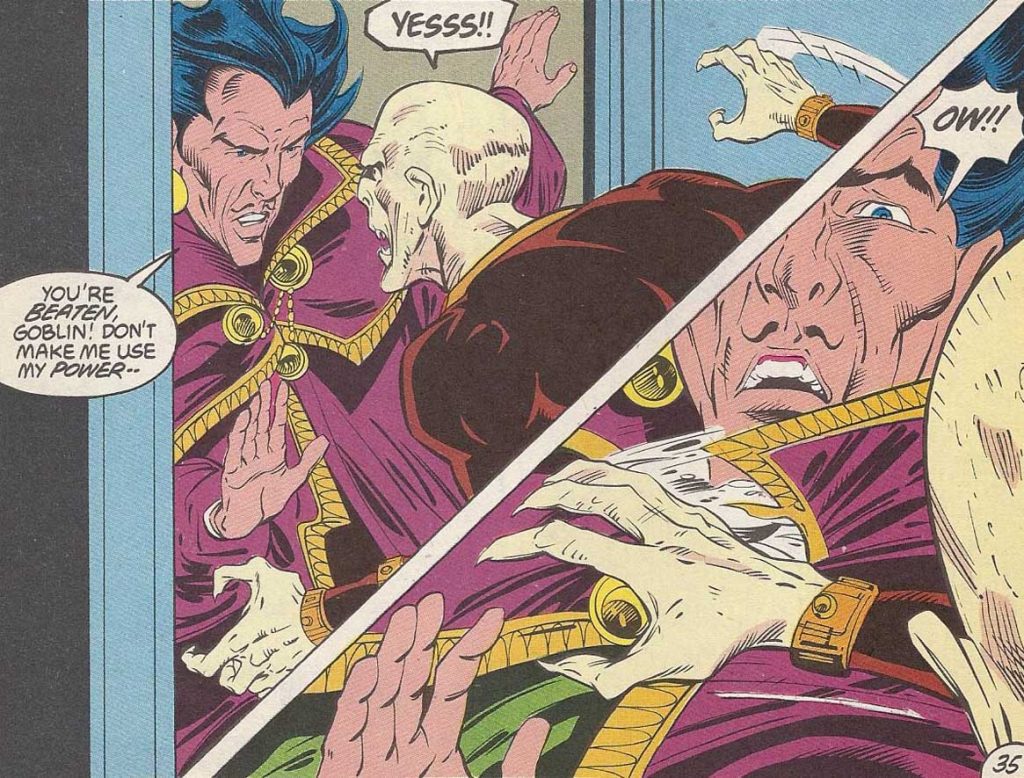
“Don’t make me use my poorly defined power! I will see the hell out of your aura!” The Hemogoblin scratches Extraño and bites his teammate Jet. That will be important later. Why?
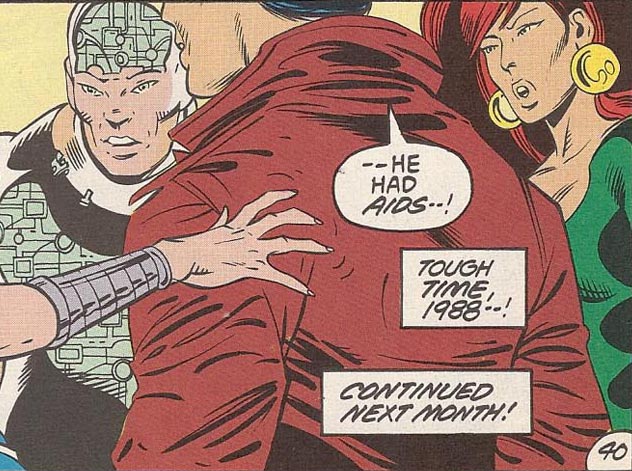
Oh.
Okay.
Tough time, indeed. For reasons of comic book science, Harbinger is also at risk, despite not being anywhere near the fight. Because of a mysterious psychic link she and Jet share (which is never once explained over the course of the entire series, but that’s another story), Harbinger manifests a bite wound in the exact same place as Jet’s. So all three go off to the local clinic to get tested.
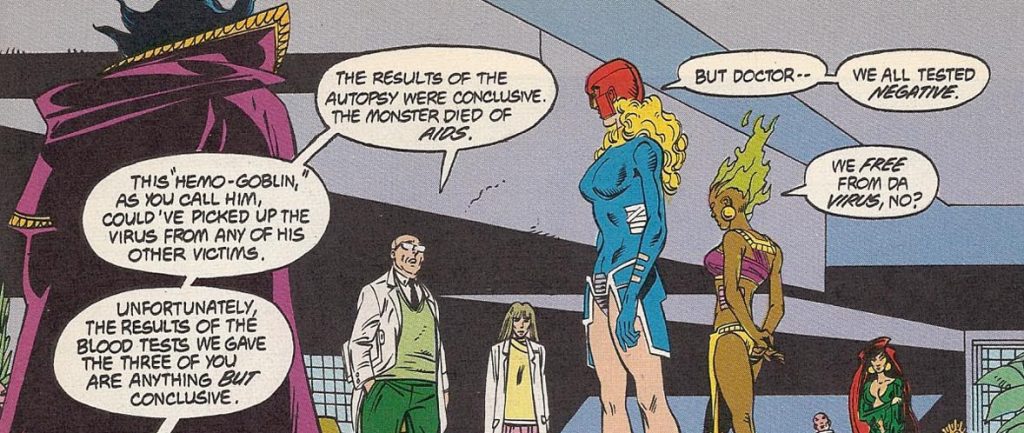
They all test negative, but the doctor points out that there’s a window of time before HIV antibodies will show up on a test. So points scored for good science, but there are some major points off coming up. Note that Harbinger said they all tested negative. Extraño included. So Gregorio was conclusively, canonically HIV- before the start of this series. (Sssh, bear with me. I’m building a case here.)
Oh, by the way, all this is happening in a flashback while they’re in Colombia fighting a drug lord named Snowflame who gains superpowers from snorting cocaine.
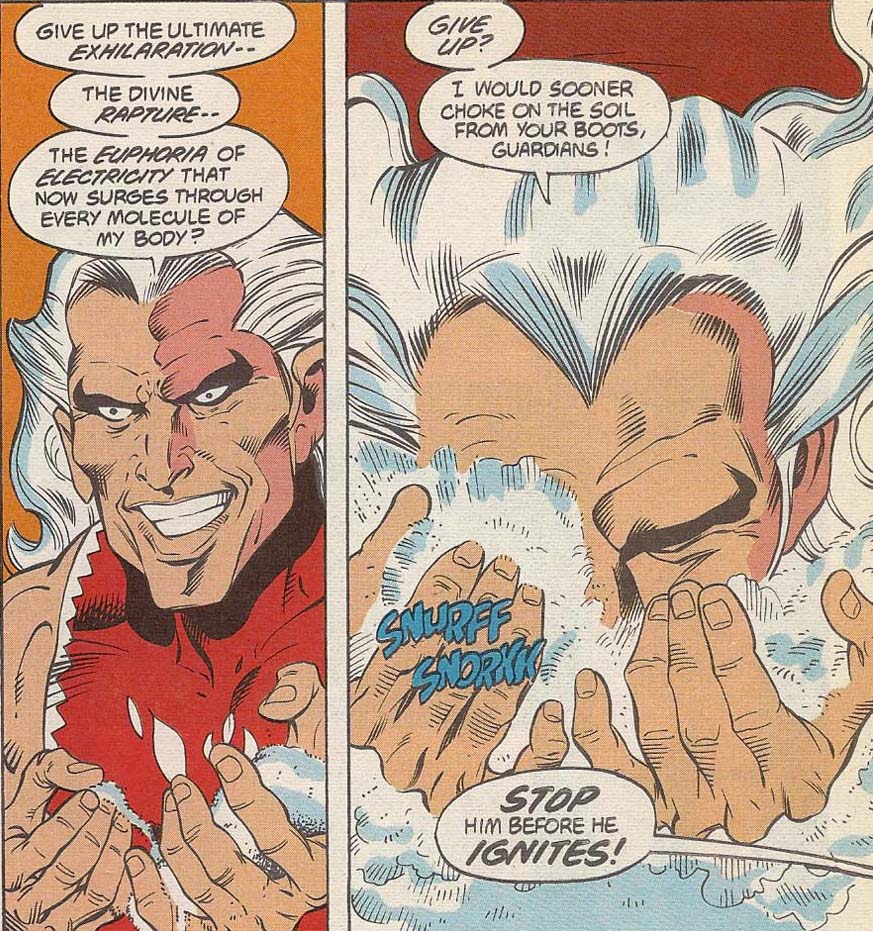
This doesn’t add much to Extraño’s story, but I can’t possibly let it go by without mentioning it. He is shoveling fistfuls of coke up his nose. Snurff. Snorkk. God, I miss the eighties. Anyway. Snowflame dies in a chemical explosion. Hooray!
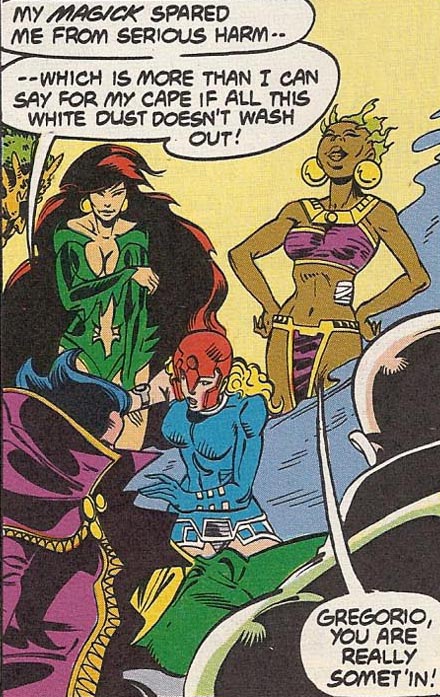
Oh, Gregorio! You’re so nonthreatening! (Everyone laughs.) (Cue closing credits.)
Back in America, our three at-risk heroes return to the clinic to get their most recent test results.
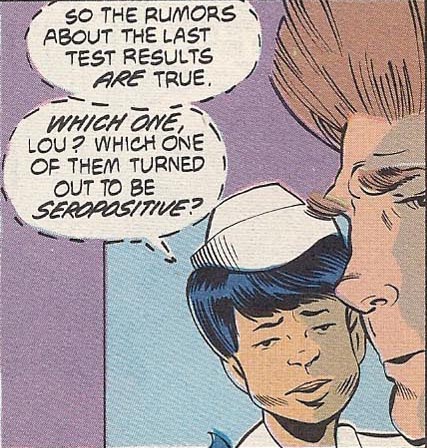
Everyone at the clinic is gossiping about their celebrity patient’s test results, which makes me seriously question their commitment to confidentiality. But the important part here is that only one of the three tested positive.
Our heroes go to a counseling group session, where the doctors are just as free with patients’ info as the orderlies are.

“And that’s Larry, he got it from a blood transfusion, and Todd got it at an orgy. Emily is a black-out drunk so she doesn’t know where she got it. Now you newbies don’t be afraid to share. This is a safe environment.” The counseling session does include an actual gay guy (besides Gregorio)…well, maybe…
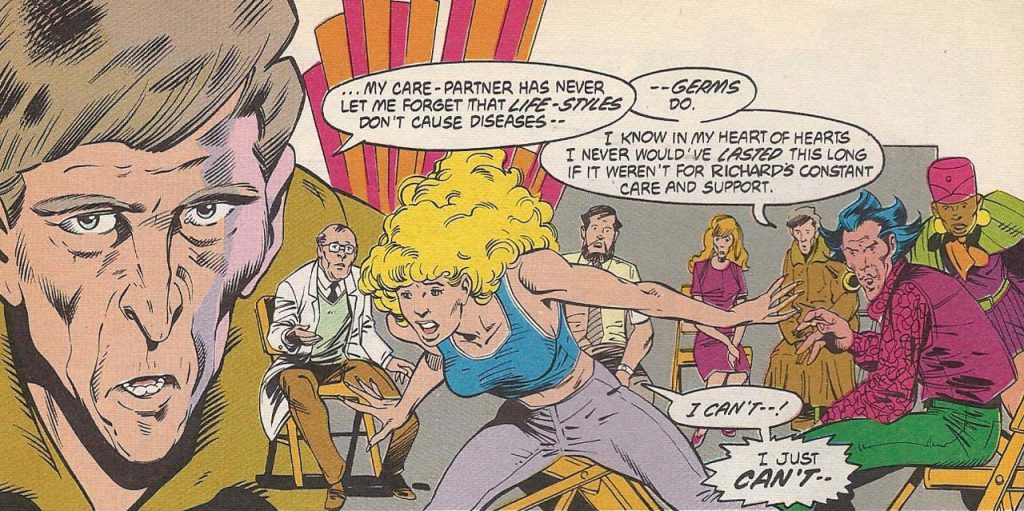
“Care-partner” is a conveniently wishy-washy term. It could be his lover, it could be a friend, it could be his home health care provider. For you youngin’s, it may seem bizarre that DC is trying to present a frank, truthful depiction of the AIDS crisis while jumping through hoops to avoid actually using the words “gay” or “homosexual.” But that was pretty much par for the course for mainstream media in the late eighties. Of course, the straight woman has to go and make it all about her.
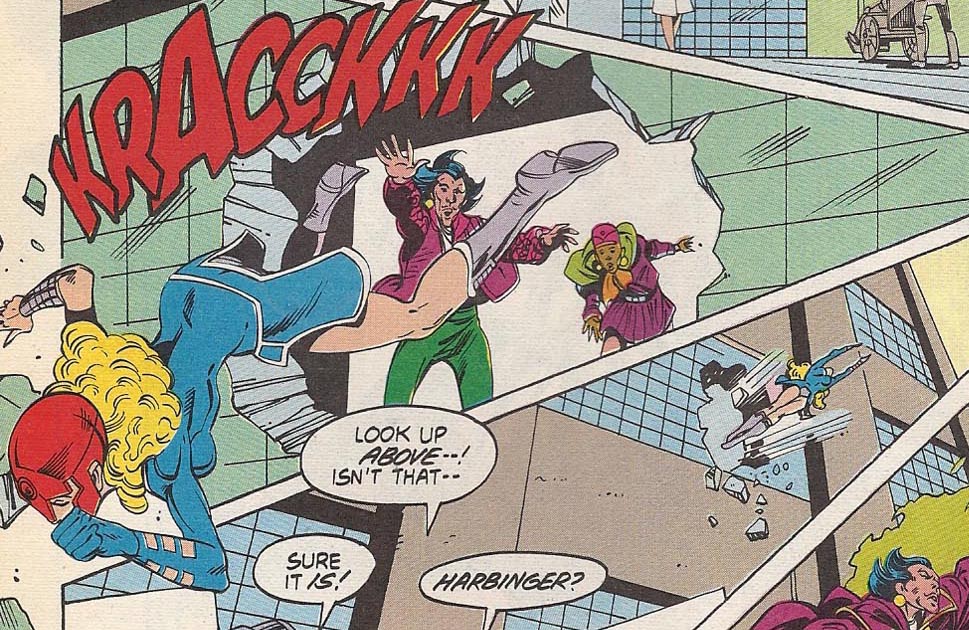
Harbinger freaks the hell out and busts through a…a…a solid concrete wall painted to look like glass windows? That’s…quite a bold design choice.
But why is she freaking out? It turns out that all three in fact tested positive, while Jet alone was diagnosed with “full-blown AIDS.” Except…the orderly said that only one was seropositive, which makes me wonder if the writer, Cary Bates, knew what seropositive actually meant. In some panels he seems to understand the difference between HIV and AIDS, in others they’re treated like the same thing. For a comic that’s trying to provide information about a pretty serious subject, it gets some important points really, really wrong.
But if you think I’m calling DC out, you should read the letter column. Hoo boy. The most common complaint is about Extraño contracting the virus from a scratch, which, as we all know, is impossible. The editors backtrack and backtrack, first saying that the Hemogoblin still had blood under his nails from a recent victim, then claiming that they never said Gregorio contracted HIV from the Hemogoblin, and finally going so far as to retcon his suicide attempt in Millennium (Remember that? It was awful.) to be partially motivated by his suspicion about his positive status.
Ooh, girl. Hold my purse. Hold my earrings. I’m going in.
Scroll up a bit and you’ll see that Extraño tested negative after his encounter with the Hemogoblin, and then positive the next time around. The writer’s intention was obviously that he contracted the virus from the Hemogoblin’s scratch, which is grossly irresponsible storytelling, especially in 1988 when information and treatment was so much harder to come by than today, and fear was so much easier. And if you want to try and fix that, do it in the damn story, not in the letter columns. Or at least acknowledge your error and apologize. Don’t pretend it never happened.
Yeah, that’s right, I’m not afraid to take on the DC comics editorial team from thirty years ago.
Ahem. Let’s leave that there. For the rest of the series, Extraño’s diagnosis pretty much fades into the background. Jet dies in an alien invasion, and Harbinger is subsequently cured through comic book logic. During the invasion, a peculiar change start to happen to Extraño…
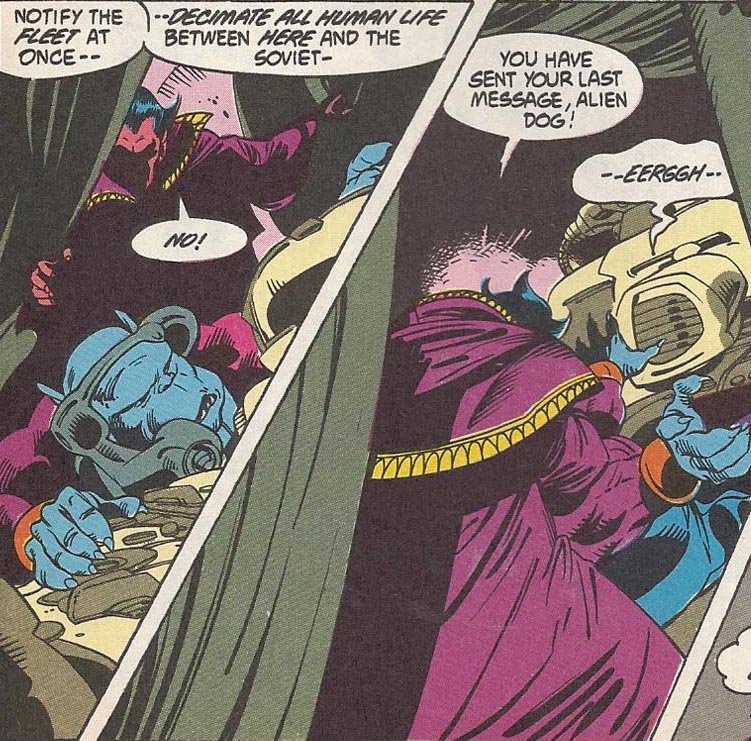
Extraño straight up kills an alien, either by strangling him or snapping his neck, while calling him an “alien dog.” I mean, it’s not that I expect him to call him “sweetie” while slaughtering him, but it does seem awfully butch for our delightfully fey hero. But let’s put a pin in that for now.
After the fighting, Gregorio takes a trip home to Peru, where he runs into Paco, an old flame. A very hot flame.
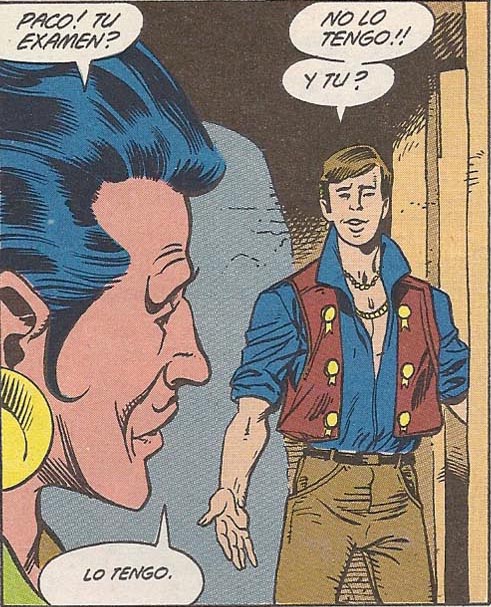
Damn, Paco, you can get it! We only get one page of Extraño’s ex, but compared to what we’ve seen of Gregorio’s love life so far, it’s practically porn. They hold hands and everything!
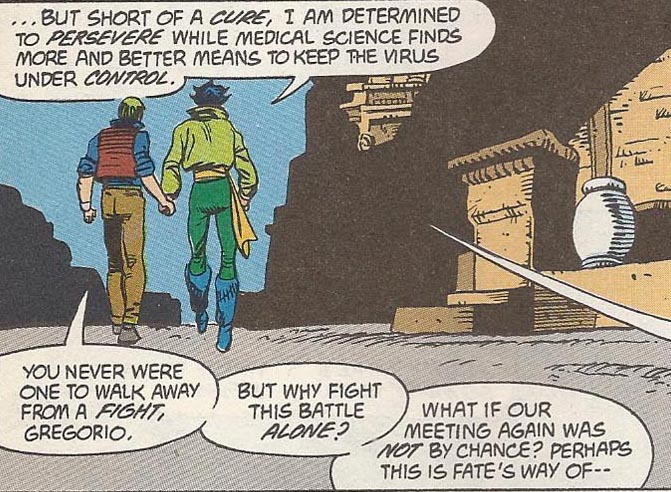
Fine, a kiss would have been nice, but confirmation that Extraño is actually a sexual being is pretty great. He hasn’t always been the sexless wonder! Paco suggests they rekindle their romance, but alas, Gregorio’s duties lie with the New Guardians now, leaving no time for love.
He goes to a graveyard to pay his respects to friends lost to AIDS, where he’s struck by lightning. The lightning passes through him and blasts open a small cave, where he finds a crystal skull. The skull shoots beams of light into his eyes, which gives him a new awareness of his powers. Why any of this happened, or where the skull came from, are never explained. Coherent storytelling, schmoherent storytelling. Time for a new costume!
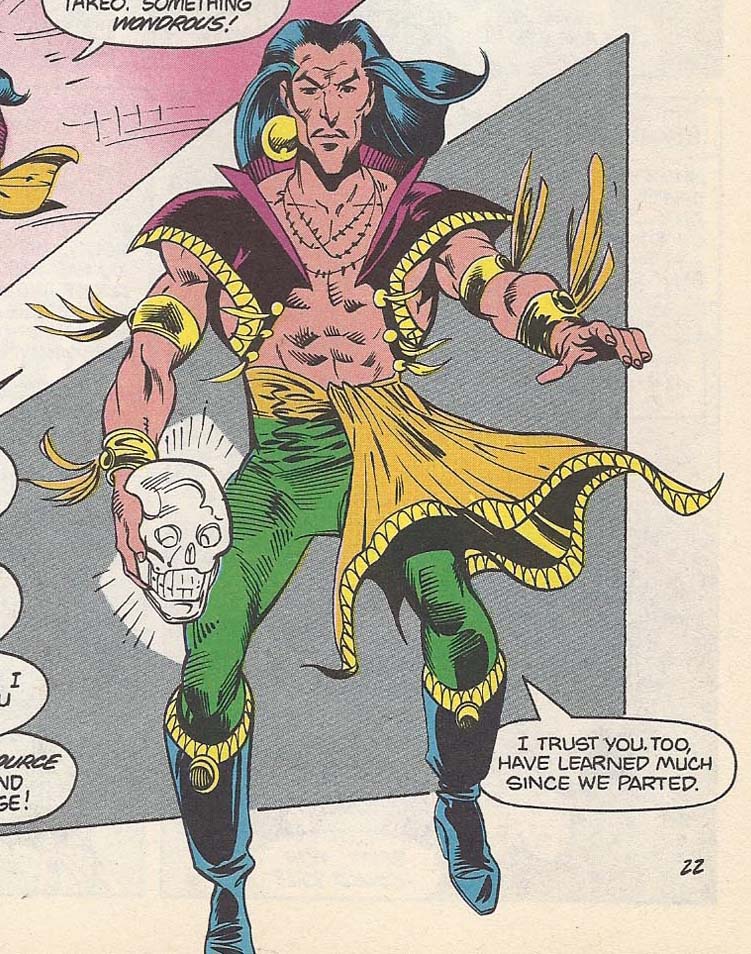
Well, that’s quite a makeover. Who knew Gregorio was so cut, right? But it’s not only a physical change that’s overtaken Gregorio. He starts talking a lot more like any generic super-magician, i.e. Doctors Fate or Strange, and a lot less like that guy at the piano bar who knows all the words to every song from Pal Joey.

He calls everyone “amigo” instead of “darling,” and there’s a lot more macho posturing, a la that “alien dog” bit from before. At least he’s still wearing those awesome earrings. Maybe he hasn’t completely lost sight of his true self.
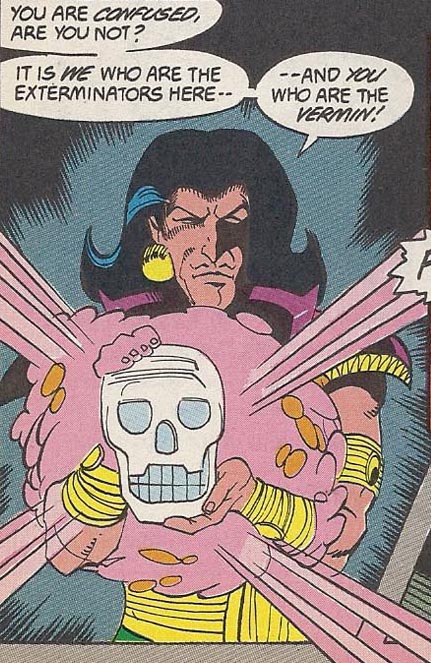
Or maybe he has. Good lord, that is terrifying. And there’s so much more.
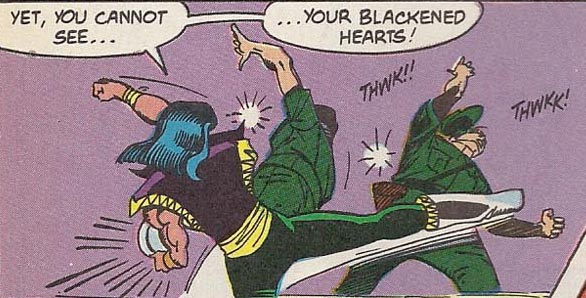
Kicking and punching at the same time without dropping the crystal! That half-hour tai chi lesson he took back in the last series is really paying off!
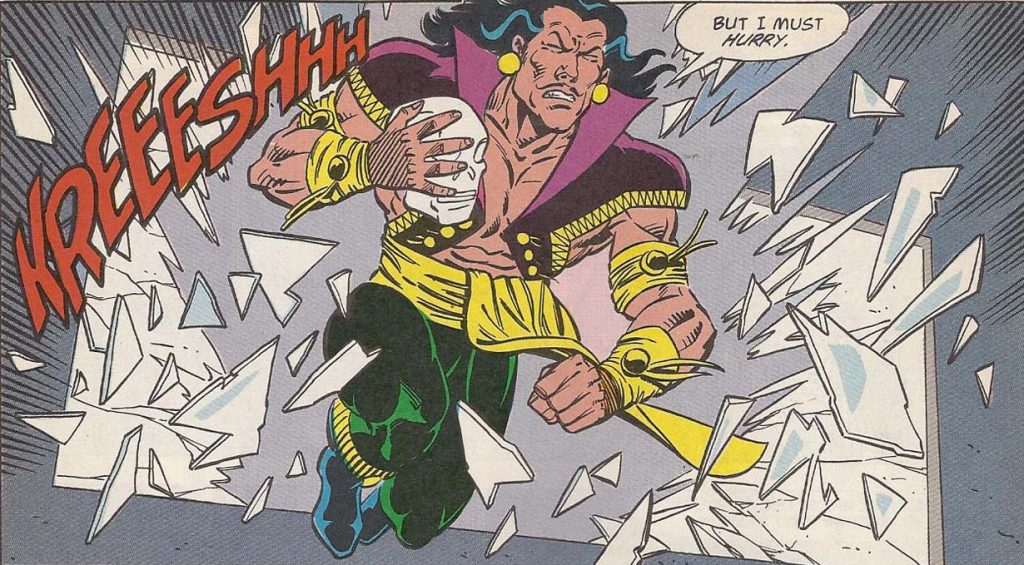
Oh, come on! Extraño exhibited a lot of gay male stereotypes, but “gym bunny” was never one of them. He’s buff as hell!
What the heck brought on such a drastic change in Extraño’s character? Was it the crystal skull? Nope – it was the letter columns. Or that’s my theory, at least. There were an awful lot of letters decrying Extraño’s effeminacy, and an editorial response in issue 9, while defending his portrayal, says they’ve changed the “mood” of the character some. And that’s a damn shame. Because I sure did prefer old Auntie to whoever the heck this muscle queen is.
The series wrapped up not long after this. A group of genetically modified people became the Chosen, the true next step in humanity’s evolution, apparently fulfilling the New Guardians’ mission, and everyone decides to stay on an island together to figure out what the hell it all meant. (Don’t ask me. I read every issue twice and I still can’t figure it out.)
The New Guardians made a few cameo appearances in the 90s, Extraño along with them. Former Green Lantern Guy Gardner visited the island, looking for a new team to join, but he and Gregorio didn’t really hit it off.
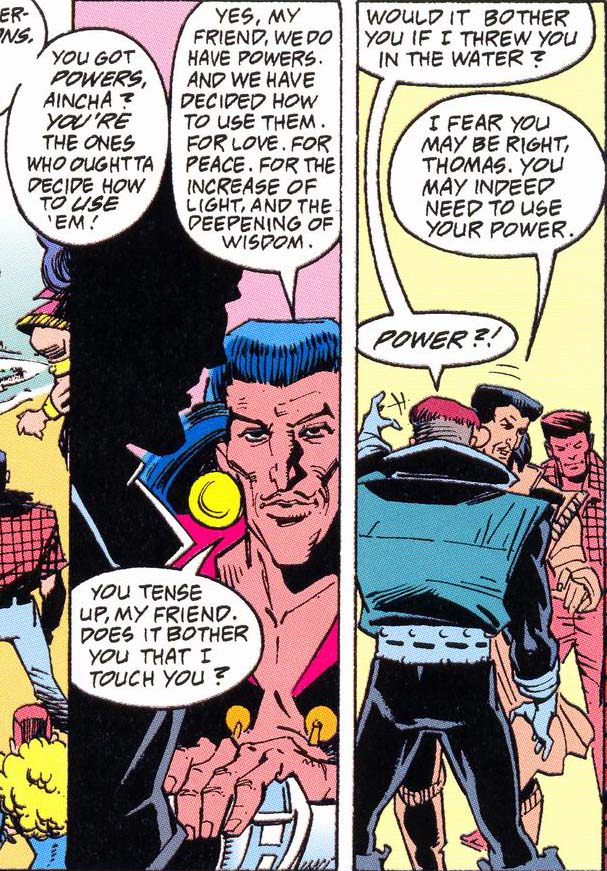
At least Gregorio’s mellowed out a bit. Island living agrees with him.
The New Guardians appear together one last time, in the pages of Green Lantern. The team gets swallowed up by this entropy creature, then rescued. Extraño only appears in one panel, at the end.
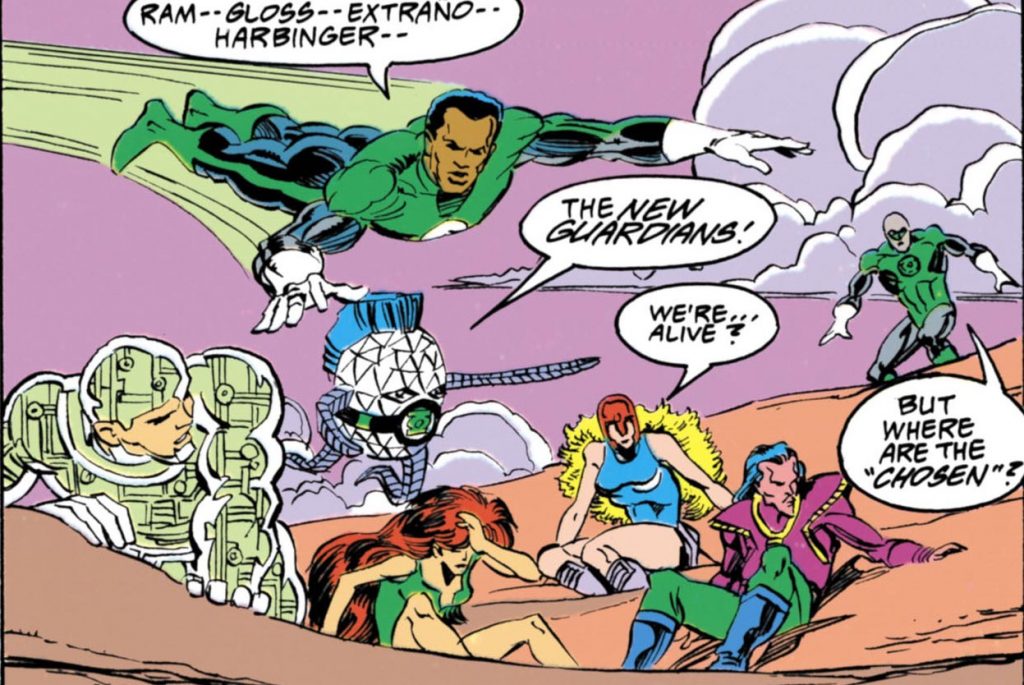
And that’s it. This panel is, as best I could find, Extraño’s final appearance. The rest of the team would pop up individually here and there over the years, but no Gregorio. Then came Flashpoint, another line-wide crossover like Millennium, which rewrote DC’s continuity and presumably wiped the New Guardians from existence. Sorry, Extraño. We hardly knew ye.
The arguments against Extraño were not entirely without merit, I’ll acknowledge. He was the only gay superhero from either major company, and that’s a pretty big burden to place on one character. Representing the entire LGBT community is a lot to ask, and the complaints about stereotypes resulted in that watered-down, serial-number-filed-off, gay-in-name-only Ultra Macho Extreme Extraño Variant with Crystal Skull Accessory action figure/cardboard cutout from the latter half of the series.
But the DC Universe is a much queerer place today. Far from perfect, of course, but a rebooted Extraño wouldn’t have to represent everyone anymore. Let Midnighter be the big tough guy, and Gregorio can go back to being his gorgeous, loving, witty, femme, fabulous self.
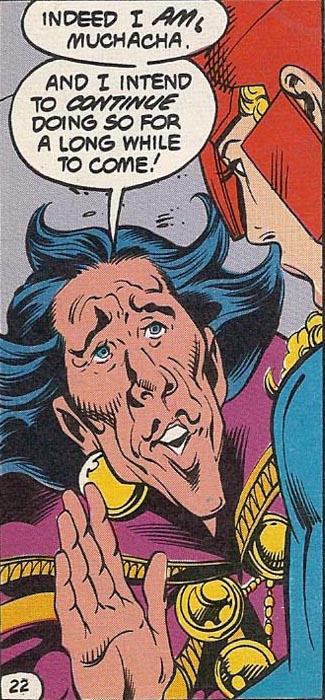
Sources:
Millennium Issues 1 through 8 (January 1988 – February 1988). Story: Steve Englehart; Layouts: Joe Staton; Finishes: Ian Gibson; Letters: Bob Lappan; Colors: Carl Gafford; Editor: Andy Helfer.
The Green Lantern Corps Issue 221 (February 1988). Story: Steve Englehart; Pencils: Joe Staton; Inks: Mark Farmer; Letters: Agustin Mas; Colors: Tony Tollin; Editor: Andy Helfer.
The New Guardians Issues 1 – 12 (September 1988 – September 1989). Writer and Artist (1): Steve Englehart and Joe Staton; Plot (2): Steve Englehart; Dialogue (2): Cary Bates; Writer (3-10): Cary Bates; Plot (11-12): Cary Bates; Script (11-12): Kevin Dooley; Pencils (2-9): Joe Staton; Pencils (10-12): Pat Broderick; Inks (1-4, 6-7): Mark Farmer; Inks (5, 9): Pablo Marcos; Inks (8): Mark Farmer and Pablo Marcos; Inks (10-12): Ralph Cabrera; Letters (1-10): John Costanza; Letters (11-12): Johnnie Mac; Colors (1-2, 5): Tony Tollin; Colors (3-4): Carl Gafford; Colors (6): Gene D’Angelo; Colors (7-12): Nansi Hoolahan; Asst. Editor (5-10): Kevin Dooley; Editor (1-12): Andy Helfer.
Guy Gardner Reborn Issue 1 (1992). Writer: Gerard Jones; Penciller: Joe Staton; Inker: Josef Rubenstein; Letterer: Albert DeGusman; Colorist: Digital Chameleon.
Green Lantern Issue 35 (January 1993). Writer: Gerard Jones; Penciller: M.D. Bright; Inker: Romeo Tanghal; Letterer: Albert DeGuzman; Colorist: Anthony Tollin; Asst. Editor: Eddie Berganza; Editor: Kevin Dooley.
